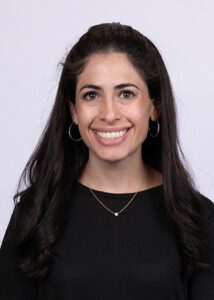
Teaching Parshanut
One of many beautiful moments in my Tanakh teaching experience comes when a student develops a strong opinion on a perek or pasuk we are learning and subsequently sees that opinion echoed exactly in what Rashi or Rashbam said centuries ago. It is an incredibly edifying moment for a student to see that, through careful study and meaningful thought, we too can delve deeply into Torah like the Torah giants before us. What happens every so often at times like these – after a few well-deserved proud moments – is the thought that our tradition of parshanut may be obsolete if I, or anyone else, can conclude one’s study of a verse with those same interpretations. Why do we need the Rashi if we can discover it on our own? Conversely, at times students may learn a commentary whose content, often quoted from a midrash, reflects fantastical events not present in the Bible itself and feels entirely “made up,” not based in a meaningful textual tradition. In those moments, students may wonder what gives credence to a midrashist’s extra-textual fable-like story as opposed to any vignette they themselves could creatively compose.
It is because of these challenges that teaching parshanut is one of my priorities in my Torah classes. Rashi, Rashbam and Ibn Ezra are not just “guys on the page.” Each parshan marks a specific and noteworthy moment in our nation’s continuing tradition of exegesis. Each one has bountiful Torah knowledge, and no comment is ever made randomly. Each one had to grapple with individual literary, theological and polemical forces to develop their approach while simultaneously holding fast to a long, complicated and unbreakable chain of tradition. Seemingly fantastical midrashim are not the foolish ramblings of old men but often the intentionally figurative teachings of brilliant sages.
One profound topic with which these exegetes had to grapple was the nature of the Torah’s writing. It goes without saying that the Torah is divine, but is it written to reflect human speech since it is written for humans, or does its divine origin also extend to its style of writing? Exegetes who subscribe to the former make nothing of its flowery, extraneous language, as humans often speak with such flourishes. Others, however, who subscribe to the omni-significance of every aspect of Torah may interpret these moments with the help of narrative or homiletical midrashim.
For example, in Genesis 25, when Esau begs Jacob for some soup, he famously repeats himself in asking for some of this “red, red stuff.” Rashi, who contends that any repeated word must indicate significant meaning, invokes the famous midrash here which sees this brief line as an allusion to the red lentils traditionally made for mourning, specifically here for Abraham’s yahrtzeit. Rashbam, on the other hand, contends that the Torah is eminently understandable according to human nature: when one is hungry and tired, one is more likely to trip over one’s speech in pursuit of food! This single verse and its various interpretations actually reflect so much more: The midrashic approach depicts Esau as one already destined for evil and God as kind in ending Abraham’s life lest he witness his grandson’s future malevolence. The peshat-oriented approach that focuses more on human psychology, on the other hand, depicts Esau as a regular human being after a long day of work. This divide can then more deeply reflect disparate approaches to topics like divine intervention and predestination, among others.
Another topic with which any parshan contends is whether the Torah can be interpreted on more than one level. In other words, can the Torah’s truth be multivalent? If so, then two distinct approaches could, in fact, simultaneously exist. This, for example, is how Rashbam views the Bible, in which the content of any verse can have both a legal and homiletic or narrative teaching. Every comment of a parshan is more than words on a page: it is a window into how each commentator views our tradition vis-a-vis their own Torah understanding.
At times, a multitude of approaches may overwhelm students, and I have to temper my inclination to share too much or too extensively with students. The first challenge is often in conveying to students that no parshan was present when the events of the Torah happened or were written. As such, no parshan is the right answer, and each parshan is a right answer. Depending on the age of the students and how concrete or abstract their thinking is, we discuss that there is no one right way to understand the Torah and that we are lucky to be both the recipients of this tradition and a piece of its next steps. Often, these discussions are the first time students realize the depth and breadth of our exegetical tradition in general and recognize the contributions of these exegetes in particular. Through these conversations, students also begin to see themselves as necessary links in a chain, recipients of a beautiful tradition and essential to its being passed along to future generations.
There is nothing that I love more than falling down the proverbial rabbit hole of parshanut. Comparing and contrasting a multitude of medieval commentators is so much more than seeing different “answers” to an exegetical problem. It entails establishing the different assumptions, goals and backgrounds with which any exegete comes to the table. It entails recognizing where each parshan falls in the tradition of exegesis. For me, every verse offers an exciting opportunity to explore different worlds, to see how any word can shape and prompt a different outcome, and to share with students how every outcome and word within this tradition is, in fact, dvar Hashem, the word of God.



